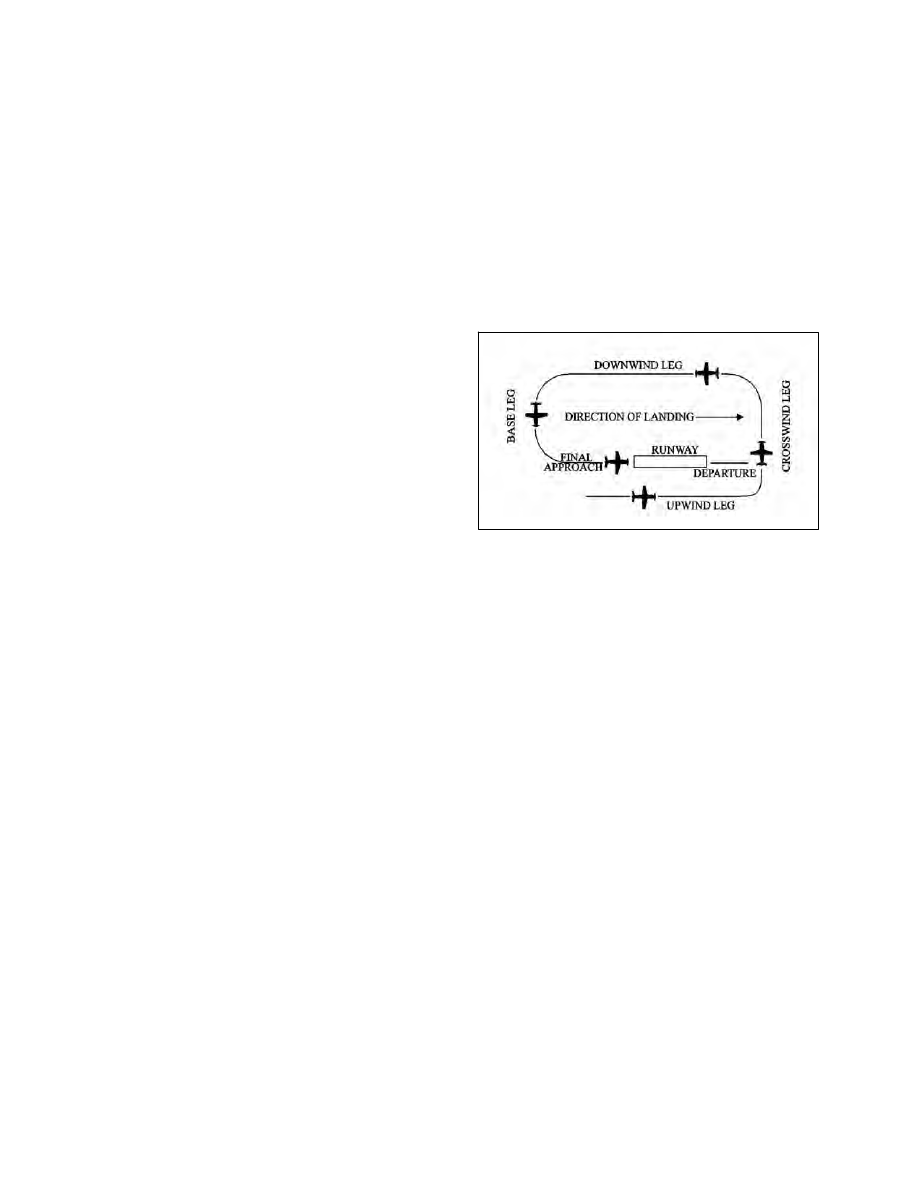
AIM
4/3/14
4−3−1
Airport Operations
Section 3. Airport Operations
4
−
3
−
1. General
Increased traffic congestion, aircraft in climb and
descent attitudes, and pilot preoccupation with
cockpit duties are some factors that increase the
hazardous accident potential near the airport. The
situation is further compounded when the weather is
marginal, that is, just meeting VFR requirements.
Pilots must be particularly alert when operating in the
vicinity of an airport. This section defines some rules,
practices, and procedures that pilots should be
familiar with and adhere to for safe airport operations.
4
−
3
−
2. Airports with an Operating Control
Tower
a.
When operating at an airport where traffic
control is being exercised by a control tower, pilots
are required to maintain two−way radio contact with
the tower while operating within the Class B, Class C,
and Class D surface area unless the tower authorizes
otherwise. Initial callup should be made about
15 miles from the airport. Unless there is a good
reason to leave the tower frequency before exiting the
Class B, Class C, and Class D surface areas, it is a
good operating practice to remain on the tower
frequency for the purpose of receiving traffic
information. In the interest of reducing tower
frequency congestion, pilots are reminded that it is
not necessary to request permission to leave the tower
frequency once outside of Class B, Class C, and
Class D surface areas. Not all airports with an
operating control tower will have Class D airspace.
These airports do not have weather reporting which
is a requirement for surface based controlled
airspace, previously known as a control zone. The
controlled airspace over these airports will normally
begin at 700 feet or 1,200 feet above ground level and
can be determined from the visual aeronautical
charts. Pilots are expected to use good operating
practices and communicate with the control tower as
described in this section.
b.
When necessary, the tower controller will issue
clearances or other information for aircraft to
generally follow the desired flight path (traffic
patterns) when flying in Class B, Class C, and Class D
surface areas and the proper taxi routes when
operating on the ground. If not otherwise authorized
or directed by the tower, pilots of fixed−wing aircraft
approaching to land must circle the airport to the left.
Pilots approaching to land in a helicopter must avoid
the flow of fixed−wing traffic. However, in all
instances, an appropriate clearance must be received
from the tower before landing.
FIG 4
−3−1
Components of a Traffic Pattern
NOTE
−
This diagram is intended only to illustrate terminology
used in identifying various components of a traffic pattern.
It should not be used as a reference or guide on how to enter
a traffic pattern.
c.
The following terminology for the various
components of a traffic pattern has been adopted as
standard for use by control towers and pilots (See
1. Upwind leg.
A flight path parallel to the
landing runway in the direction of landing.
2. Crosswind leg.
A flight path at right angles
to the landing runway off its takeoff end.
3. Downwind leg.
A flight path parallel to the
landing runway in the opposite direction of landing.
4. Base leg.
A flight path at right angles to the
landing runway off its approach end and extending
from the downwind leg to the intersection of the
extended runway centerline.
5. Final approach.
A flight path in the
direction of landing along the extended runway
centerline from the base leg to the runway.
6. Departure leg.
The flight path which begins
after takeoff and continues straight ahead along the
extended runway centerline. The departure climb
continues until reaching a point at least
1
/
2
mile